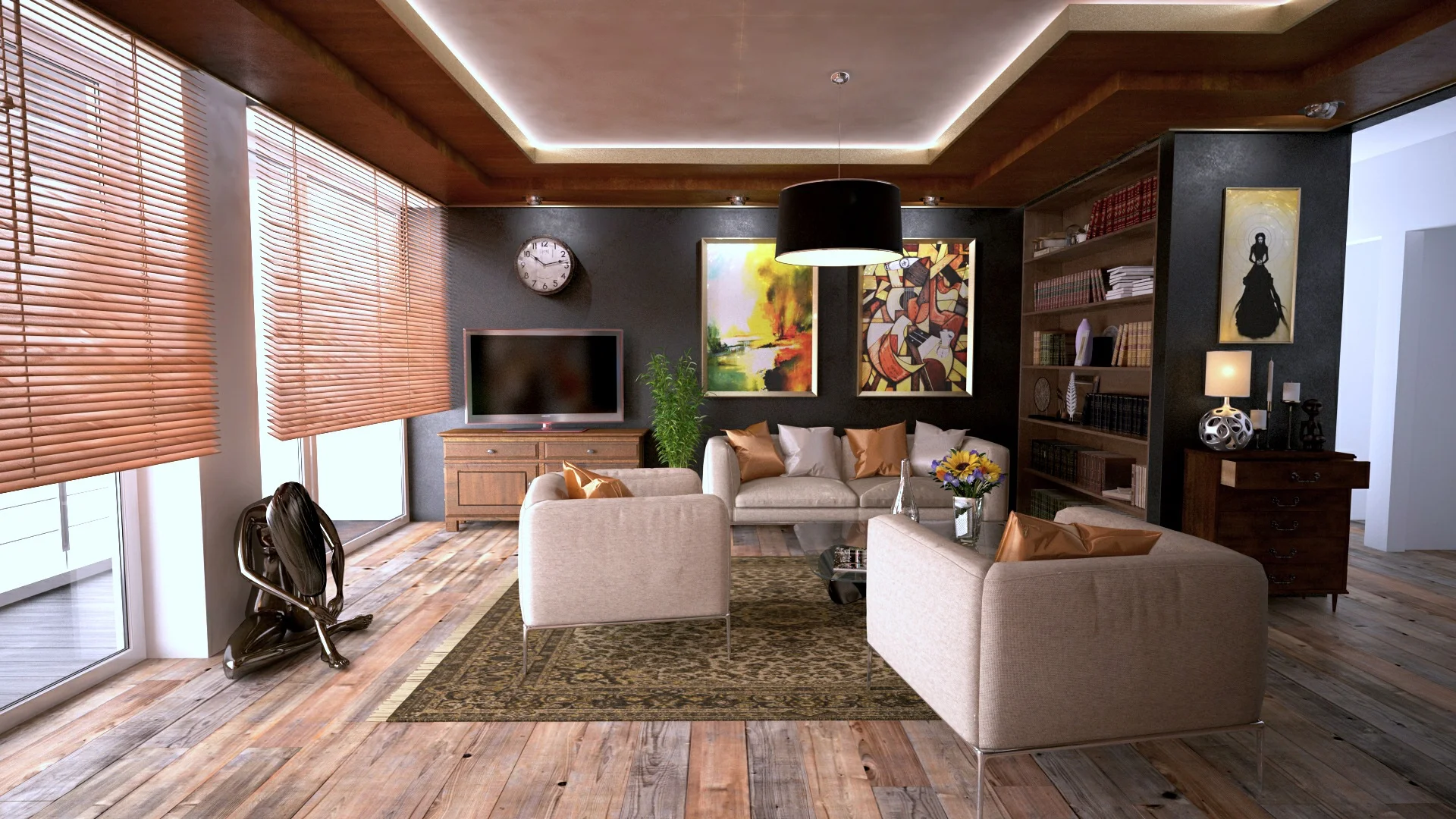Real estate myths are often passed around among buyers and sellers. Some of them have some truth; others are outright false; and still others depend on a variety of factors that are best discussed in depth. Be prepared to help educate your buyers and sellers, so they make the smartest choices, rather than just accept what they hear.
Myth #1: Always change bold paint colors to neutrals before selling.
Reality check: False
Bold doesn’t automatically mean bad, says Kim Grant, broker with John Greene Realty in Oswego, Ill. Sometimes, a room calls for a grand color in order to play up an architectural feature, divide a room in two visually, or add cheer when there’s little natural light. But even if a room sports a bold shade of paint, home owners don’t always have to grab a brush to change it up before listing. Sellers can tone down a strong color with a neutral counterpart, such as a calming rug or tranquil array of fresh greenery. If the room needs a change, Grant suggests sharing the name of a painter, getting a bid on the cost of repainting, and offering a handful of paint chips that demonstrate alternative color options that are more universally appealing. “It’s up to the salesperson to explain that another color can transform the space without much effort,” Grant says.
Myth #2: Never buy the biggest house on a street.
Reality check: Usually true
The largest house on a block or in a neighborhood often is the most expensive, which may affect its appraisal and make its price much higher than other homes in the same neighborhood on comparative analyses, says Michelle Shurtleff, salesperson with the Miami Real Estate Team in Key Biscayne, Fla. Most buyers today are concerned about value when making an investment in a home, so they’ll appreciate a caveat about limiting their pool of future buyers by pricing themselves out of or above the local market, she says.
Myth #3: Always avoid first-floor condos because of noise and safety concerns.
Reality check: False
A first-floor unit can be a terrific bargain and a wonderful place to live, says salesperson L.J. Ganser of Fenwick Keats Real Estate in New York, who has sold many in Manhattan. He has found they offer numerous advantages, and sometimes they just need a few tweaks to dampen possible sounds and make owners feel safer. Among the advantages: “You don’t have to wait for an elevator [or] climb stairs, and you can enjoy the changes in scenery from the ground level up,” he says. Suggest ways to soundproof the unit with a good-fitting door and sound-dampening acoustical panels on the interior side. Also, suggest window treatments that block noise and views such as “top down, bottom up blinds” that can be raised from the windowsill to a height that prevents pesky pedestrians from ogling the buyer’s home but still allow in light. For safety, suggest wrought iron bars, if the unit doesn’t have them, or an alarm system.
Myth #4: Sellers should expect to earn back everything they invested in remodeling projects at resale time.
Reality check: False, but…
A quick check of the annual “Cost vs. Value” survey will demonstrate to sellers that it’s nearly impossible to get 100 percent of the money they put into a redo back when they sell. A siding replacement of fiber-cement brought the highest return in the most recent survey in the upscale project category, and that percentage was 84.3 percent. Still, Roman Bruno, a salesperson with Coldwell Banker in Los Angeles,has found that remodeled kitchens and bathrooms continue to be huge selling points to prospective buyers. “They make a home more attractive to potential buyers—and help them avoid doing the work,” he says. Paul Rosso, ABR, GRI, a salesperson with RE/MAX Properties Ltd. in Newtown, Penn., agrees that it pays to keep a house updated and in line with similarly priced homes in the community. The two times he cautions against upgrades are when a home owner plans to sell soon after making changes and when the market is flat or heading downward.
Myth #5: To sell quickly in this market, you must have the most popular features buyers are seeking.
Reality check: False, but…
It’s true that items such as master bedroom walk-in closets and first-floor master suites are all the rage now. But most homes in Los Angeles don’t have these features because they were built before these residential trends became widespread, says Bruno. “There is always a market for these homes, and someone with a vision may buy it just to update it,” he says. “Right now, we have little inventory and a lot of buyers — including absentee owners and investors — so we don’t see the need for redos as a problem.” Rosso agrees, but warns that the selling price usually reflects the absence of the feature: “Every home will sell, but at the right price. Price is the great equalizer.”
Myth #6: If buyers don’t like an exterior, they’ll never go inside.
Reality check: Often true
Without some curb appeal, most think, “Why waste the time,” says Grant. She suggests buyer’s agents prepare clients for the exterior ahead of time by asking buyers in advance what styles of houses they like and dislike, and even showing them images before checking out a place in person. If a house works otherwise—its layout, number of bedrooms and bathrooms, and maybe a backyard—she says listing agents can find ways to remove or downplay features that may not appeal. Exterior changes may be as simple as adding landscaping that dresses up part of the offending façade, painting shutters and a door to focus attention, or upgrading a walkway with a nicer material.
Myth #7: Homes with swimming pools are always tougher to sell.
Reality check: False
While they bring with them high maintenance and utility costs, a lot of buyers look specifically for homes with pools, especially in warmer climates. Usually it’s just the seasoned investors and older home owners who shy away from homes with pools, says Bruno. To appeal to buyers not looking for a pool, he suggests sturdy canopies that can slide over the top to make a safe, walkable patio. But he never advises clients to remove a pool. “You don’t cater to a market that doesn’t want something. Instead, you use it as a tool to attract those who do,” he says.
Myth: #8: Green features automatically mean a higher listing price.
Reality check: Not always
Bruno says many buyers find added value in smart, environmentally friendly homes. “LEED certification has become a huge marketing feature, and it’s not just something for home owners living on either coast,” he says. Still, Rosso says many buyers shy away from these houses if they’re priced much higher than comparable non-green homes. “In my area, I haven’t seen buyers willing to pay a green premium. I view them as added value that can help with marketing a home,” he says.
Myth #9: Always remove holiday decorations before listing a home.
Reality check: False
If the decorations are tasteful, they’re fine, says Ganser. If it's Christmas, go green and minimal with a tree, some fresh boughs on the mantle, and a pretty wreath on the door. “There will be some Grinches who come and object to Christmas décor on principle. Perhaps Jacob Marley will pay them a visit that evening and convince them to lighten up,” he says. “But most people like the holidays, and if sellers can warm their spirits with a light, welcoming touch, I say do it. But don’t make potential buyers wonder what's going on with a corner that’s blocked by a 9-foot-high tree.” Follow the same rules for other holidays, he advises. At Halloween, fill a dish with candy corn; for Easter, bring on the jelly beans.
So what’s always true?
Real estate professionals should always advise buyers and sellers to avoid accepting widely held truisms as fact. Help clients put these and other myths in the context of overall economic trends, local and neighborhood factors, and the special features that distinguish individual properties on the market.




































The creation of a dedicated Express Entry Stream allows Alberta to invite candidates in the federal Express Entry pool to apply for a provincial nomination.